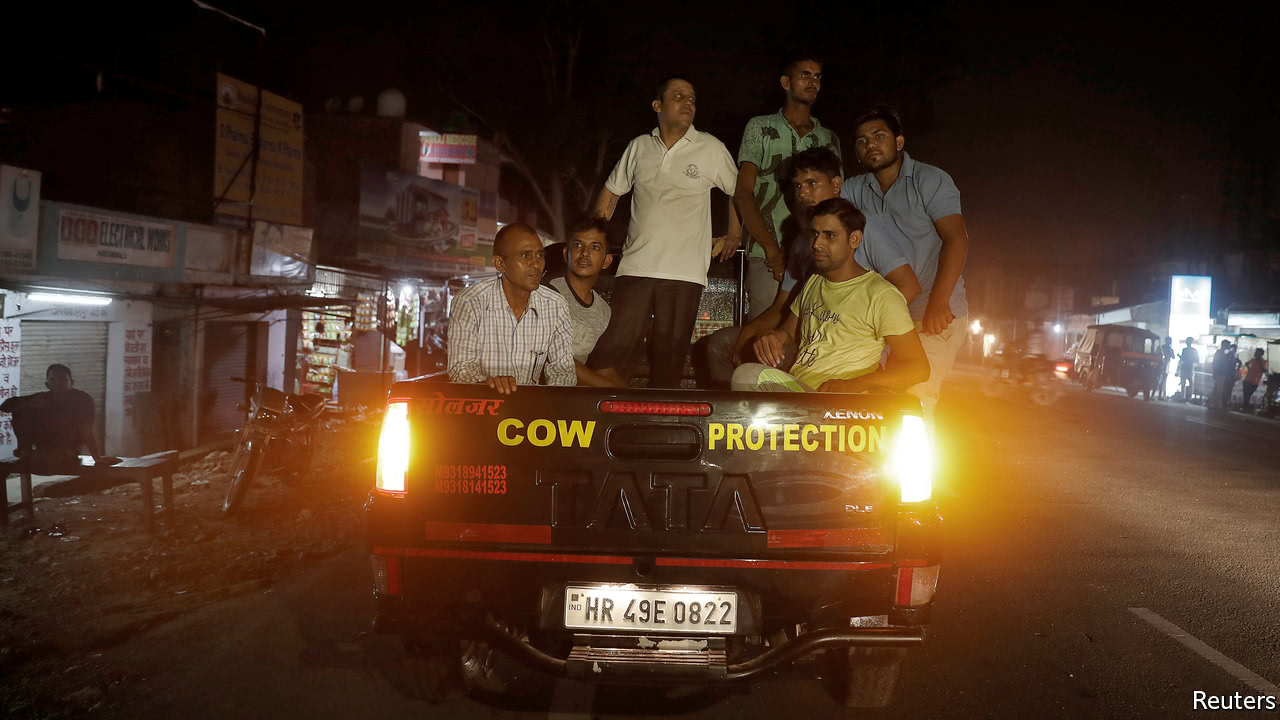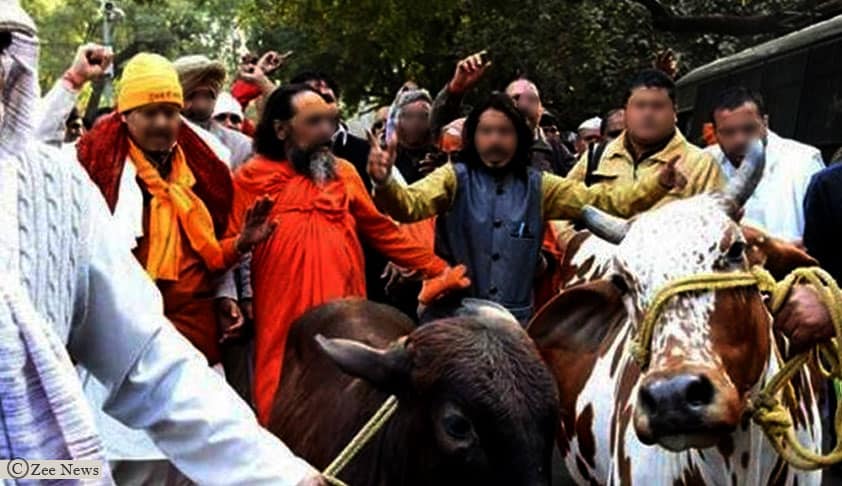Often just an excuse to exacerbate tensions between religious communities

MANY stock images of India’s cities show cows lying by the roadside or ruminating in the middle of the street as cars and bikes swerve around them. The animals, sacred to Hindus, have a licence to roam. Earlier this month the state government of Uttar Pradesh proposed making medicines with their urine, which is rumoured to cure cancer, eliminate wrinkles and prevent ageing. Their dung is believed to absorb harmful radioactivity. The animals’ status is now so high that in recent years “cow vigilantes” have taken to attacking and sometimes killing people they suspect of trafficking in cattle intended for slaughter. Thirty-seven such attacks were reported in 2017, many more than in previous years. Just last month a mob in the eastern state of Bihar beat up a truck driver whom they suspected to be carrying beef.
It was not always so. D.N. Jha, a historian, writes in “The Myth of the Holy Cow” that beef, along with other varieties of meat, was often used in the haute cuisine of early India. But sometime during the second millennium BC, with agriculture evolving, cows were increasingly considered more useful as a source of milk, manure and ploughing power than as meat. Fast-forward to the 19th century AD and for upper-caste Hindus the eating of beef had become a taboo. Cows were central to the first big riot between Hindus and Muslims, in Uttar Pradesh in 1893, which took place after Muslims had been stopped from slaughtering cows during an annual festival.
Most of India’s 29 states have either banned or restricted the killing of cows. In Gujarat it is punishable by life imprisonment. Rajasthan has a cow-welfare ministry. In the “cow belt” of Haryana, Uttar Pradesh, Bihar and Madhya Pradesh, “cow protectors” armed with bats, swords and guns look for vehicles that are transporting cows across state borders. They have been known to extort money from drivers without verifying whether the cows they carry are being sent to slaughter or, in the case of meat, whether it is indeed beef. In a country where relations between some Hindu and Muslim communities remain especially fraught, this behaviour does not necessarily reflect greater religiosity. But politics does seem to matter. According to IndiaSpend, a data-journalism website, 97% of all cow-vigilante attacks reported since 2010 took place after the Hindu-nationalist Bharatiya Janata Party (BJP) came to power in 2014, with Narendra Modi as prime minister. Most have targeted Muslims and Dalits (formerly known as untouchables), who traditionally skin the carcasses of cows. In a report published in January, Human Rights Watch, a global campaigning group, wrote that the Indian government has failed to investigate the attacks in credible fashion, while “many senior BJP leaders publicly promoted Hindu supremacy and ultra-nationalism, which encouraged further violence.”
The costs of the attacks are high. India’s $83bn dairy industry has taken a hit. Farmers are increasingly unwilling to expand their herds, as it is hard to get rid of unproductive livestock. Shelters for old cows are often overcrowded, says Kavita Srivastava, an activist. In Rajasthan a 10% surcharge is levied on stamp duty to fund the shelters. In many states boxes outside shops encourage people to donate towards their upkeep. But the system is opaque. “No one knows where the money ends up,” says Arjun Sheoran, a lawyer. Some steps would improve the situation. Stricter laws that recognise cow vigilantism as a crime against minorities could be enacted. Victim-protection schemes and faster court rulings could be funded. And more stringent punishments could be meted out to those who use cows as a pretext to exacerbate communal tensions. But moves of this nature will be difficult in a country where a judge claimed just a few years ago that cow dung was more valuable than the Koh-i-noor diamond.
https://www.economist.com/blogs/economist-explains/2018/02/economist-explains-2

February 17, 2018 at 7:30 pm
The propagation of cow protection is a means of political mobilisation by inciting communalism and dividing people
February 17, 2018 at 7:36 pm
Economist is reliable on reporting on India???? Laughable. It is like trusting Winston Churchill’s inane comments on Hindus. And the historians have been contested as well. Bad translations from Sanskrit were often the cause of errors. For example a quote attributed to King Dasharath in Valmiki’s Ramayana says “pashas” we’re used as sacrifice animals in Yajnas and Yagas. Left wing historians translated the word “Pashtuns” as cows. But that word also means jantus or animals such as goats. Similarly Soma rats was translated as alcohol which is totally wrong. To denigrate Hibduism and Hindu texts these Britishers and their vassals went to any lengths. They said Sanskrit literature and literatures such as Telugu and other languages are worthless compared to English and French etc.., showing a morbid Eurocentrism so popular among Mecaualy’s bastardized in India today especially Historians and media. But we now know the truth. Kalidasa is far superior to Shakespeare and Tolstoy. Of course Vyas and Valmiki are the greatest writers of the world. Please cut down this slavish Eurocentrism.